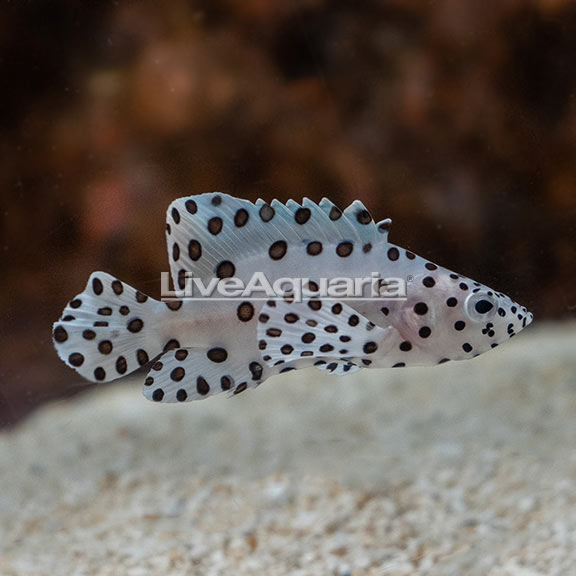
Additional locales and sizes may be available!
Additional locales and sizes may be available! Email me when availableQuick Stats
What do these Quick Stats mean? Click here for more information
What do these Quick Stats mean? Click here for more information
Overview
PLUS, hobbyists that use our LiveAquaria® Professional Reef Salt have the added benefit knowing marine species shipped from our LiveAquaria® Wisconsin Facility share the same water parameters. In other words, if you use our Professional Reef Salt, marine species shipped from our Wisconsin Facility will acclimate and transition to your home aquarium with less stress to set the foundation for longer term success.
The Panther Grouper Cromileptis altivelis is known by other names such as Polka Dot Grouper, Humpback Grouper, High Finned Grouper, and the Barramundi Cod. A large marine fish, it can grow to 28” and has a distinctive look. This Grouper has a thin vertical profile with substantial height, a relatively small head and elongated snout, giving it a humpback appearance. Adults are a cream color with black spots scattered throughout its body and fins. The top of this marine fish is narrower than the base and has a concave profile at the base of its head. It is difficult to distinguish between males and females of the species.
In nature, they are found in lagoons, seaward reefs, silty areas, and coral reefs. To mimic this environment in a home aquarium, use a sandy substrate topped with pebbles and live rocks for hiding. There should be plenty of room for swimming, which means they require a large aquarium because of their size. Aquarium should have a lid. Typically, shy when it is first introduced to the aquarium, the aquarium should have a lid to prevent escape. Panther Groups will eat invertebrate and small fish and can be aggressive towards other fish if stressed or threatened.
This member of the Serranidae family is a carnivore that consumes a lot of food because of its size. Because of this, the aquarium will need to have an efficient filtration system and an efficient water flow. Its diet should consist of meaty foods such as krill, shrimp, and small fish.
Breeding in captivity is difficult.
Approximate Purchase Size: 2" to 3"











